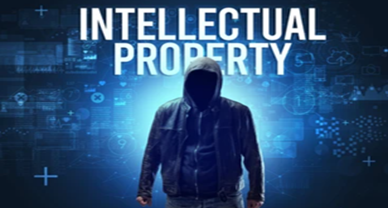Exposing the Secret: The Most Pernicious Threat to the Art of Magic
Exposing the Secret: The Most Pernicious Threat to the Art
Among the manifold challenges that threaten a magician’s intellectual repertoire, the deliberate exposure of secrets to the lay public poses the gravest risk.[i] Unlike covert stealing within the magic community—often a tale of envy and espionage—exposure inflicts a deeper, more irreversible wound. While the theft of a trick may lead to its imitation, public disclosure demolishes its mystery entirely, rendering it obsolete.[ii] The illusion, once unmasked, is reduced from a marvel of performance art to a mere mechanical explanation.[iii]
Historically, even well-intentioned exposures have had adverse consequences.[iv] While certain early disclosures aimed to dissociate magic from superstition and witchcraft, most modern revelations have been driven by commercial gain or personal vanity. The real harm, however, lies not just in revealing the mechanics but in displacing the wonder that defines the magical experience.[v] Once a secret is known, the audience no longer engages in suspended disbelief; they become analysts rather than admirers.
This destruction of wonder carries economic and artistic implications. Magicians often invest considerable time, effort, and capital into devising and perfecting their illusions. When these secrets are publicly exposed, the magician is stripped not only of intellectual credit but also of professional livelihood. It’s not merely the loss of an idea—it’s the loss of a craft honed through discipline and artistic finesse. For performers reliant on “proprietary magic,” such exposure becomes a direct attack on their ability to earn, innovate, and inspire.[vi]
Some argue that exposure fosters innovation by compelling magicians to create better illusions. While true for a rare few, the financial and creative burden of constant reinvention cannot be shouldered by all, especially not in regions like India, where the institutional framework for protecting magic as intellectual property remains underdeveloped. This makes the case for stronger acknowledgment of magic secrets as valuable trade assets, akin to proprietary techniques in other creative professions.

Moreover, magic secrets, unlike typical intangible assets, defy the conventional notion of non-rivalry. A novel, song, or invention may be used by many without negating its value to the creator.[vii] In contrast, a magic trick, once exposed, is inherently devalued. Its efficacy depends on secrecy; revelation is its ruin. Thus, the exposure of a magical secret is not mere consumption—it is erasure. It resembles not the borrowing of an idea, but the burning of a theatre to watch the flames dance.
To preserve the dignity and continuity of magic, especially in culturally rich yet legally ambiguous environments like India, a reorientation in perspective is essential. Exposure should not be viewed as a harmless divulgence but as an intellectual vandalism—an act that cripples the art form by severing its essential lifeline: secrecy.[viii]
This is the argument for greater recognition of magic secrets as valuable trade commodities, on par with proprietary methods in other creative occupations. Intellectual property law for magic continues to be notoriously difficult and notoriously unsatisfactory. Existing copyright law is having trouble safeguarding magical techniques because they are typically viewed as ideas and not as expression. Patent law is infrequently pursued because the disclosure provisions would reduce the value of the secret. Trade secret law provides some protection but demands ongoing vigilance and legal enforcement that too many solo magicians cannot maintain.
Further, the magic secrets, unlike common intangible assets, breach the traditional definition of non-rivalry. A novel, a song, an invention may be utilized by numerous individuals without the original author losing value. Conversely, the instant that the secret of a magic trick is revealed, it loses its intrinsic value. Its usefulness relies significantly on secrecy; it is its nemesis. This characteristic renders magical intellectual property distinctly different from other creative products. The traditional economic frameworks that support intellectual property protection—through the promotion of creation through temporary monopolies—break down in the case of magic, as the monopoly is perpetual and absolute until it is eroded by discovery.
As such, the discovery of a magical secret is not passive consumption, but a form of erasure. It is less like the theft of an idea and more like the destruction of a theater to see the dance of the fire: while the spectacle of the destruction might be momentary entertainment, it leaves the once-flourishing art form in shreds of ash. Revelation turns works of creativity into two-dimensional information, erasing the rich multidimensional artistry, presentation, and emotional investment that gives strength to magic.
The cultural implications of mass exposure reach beyond simple individual economic loss, threatening entire traditions of magical practice. The majority of traditional magic, particularly that which is grounded within specific cultural contexts, relies upon the preservation of ancestral knowledge passed down through centuries. Widespread publication of such secrets through modern media has the potential to commodify and banalize centuries of cultural tradition. The profane replaces the sacred, the mysterious becomes ordinary, and culturally specific practice is homogenized internationally.
In addition, the mass availability of occult knowledge ironically results in its downfall. When occult secrets are readily accessible without the background of appropriate training, mentorship, and cultural context, they tend to emerge insufficiently or inappropriately. Such occurrences not only taint the art form but also have the potential to perpetuate negative stereotypes or instances of cultural appropriation. The apprenticeship system of the magical arts was originally meant not only to guard secrets but also to facilitate their proper transmission, including the cultural and ethical contexts under which they were to be used.
To preserve the dignity and continuity of the magic, especially in richly cultural but legally undefined environments like India, there needs to be a shift in perspective. Revelation cannot be viewed as a benign revelation but as an intellectual vandalism—a step that weakens the art form by severing its lifeline: confidentiality. This is a shift that calls for legal imagination and cultural understanding. Society needs to realize that magical secrets constitute a special intellectual property that must be safeguarded, and the magic communities need to develop more effective means of preservation and controlled release of their lore. The path forward is a fine balance of keeping the mystical aspect of magic intact and allowing it to grow and evolve. This could involve the creation of new legal frameworks specific to magical intellectual property, the creation of more robust ethical codes among magical societies, and public education dissemination of the true consequences of exposure. Only through such large-scale initiatives can the ancient art of magic stand a chance of having a future and thriving in a world of instant access to knowledge and digital openness.
Author:–Amrita Pradhan, in case of any queries please contact/write back to us at support@ipandlegalfilings.com or IP & Legal Filing.
References
[i] Mark C. Suchman, Invention and Ritual: Notes on the Interrelation of Magic and Intellectual Property in Preliterate Societies, 89 Colum. L. Rev. 1264, 1264–94 (1989), https://www.jstor.org/stable/1122830.
[ii] In Rice v. Fox Broad. Co., a federal appeals court ruled that a video revealing magic tricks was not protected by copyright. See Rice v. Fox Broad. Co., Westlaw, https://content.next.westlaw.com/Document/I75a093c165b711db8a54a698991202fa/View/FullText.html.
[iii] Teller, the silent half of the magic and comedy duo Penn & Teller, has sued a Dutch entertainer for threatening to sell the secret behind one of his tricks. See Teller speaks out, sues over magic trick, Westlaw (Apr. 16, 2012), https://content.next.westlaw.com/Document/Ieba1b260955f11e19fefb85885c303b5/View/FullText.html.
[iv] The 9th World Intellectual Property Day was observed at Panjab University, emphasizing the importance of IPR in academia. See World Intellectual Property Day observed at PU, The Indian Express (Apr. 29, 2009), https://indianexpress.com/article/cities/chandigarh/world-intellectual-property-day-observed-at-pu/.
[v] Secretive Magic Leap says ex-engineer copied headset for China, The Indian Express (June 23, 2019), https://indianexpress.com/article/technology/tech-news-technology/secretive-magic-leap-says-ex-engineer-copied-headset-for-china-5795633/.
[vi] Magic and Intellectual Property in Preliterate Societies discusses how magic constitutes an intellectual property regime. See Ritual as Intellectual Property, JSTOR, https://www.jstor.org/stable/2804052.
[vii] The Paradox of Intellectual Property, Oxford University Research Archive, https://ora.ox.ac.uk/objects/uuid%3A60536eca-db21-4837-b885-858daf416816/files/rcj82k835f
[viii] Expressive Incentives in Intellectual Property discusses broader scopes of IP protection. See Expressive Incentives in Intellectual Property, JSTOR, https://www.jstor.org/stable/23333520.


